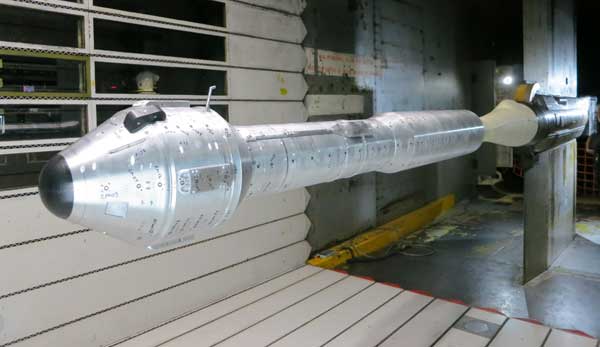Boeing Completes 2 Test Milestones for NASA Commercial Crew Program
Boeing Completes 2 Test Milestones for NASA Commercial Crew Program-CST-100 integrated model evaluated in wind tunnel-Centaur rocket stage tested for human spaceflight
By successfully completing two significant tests of the integrated Commercial Crew Transportation System, Boeing and United Launch Alliance (ULA) have moved the United States closer to regaining its capability to return humans to space.
The team recently completed the first wind tunnel test for connected scale models of the Crew Space Transportation-100 (CST-100) capsule, launch vehicle adaptor and Atlas V rocket, as well as a thrust test of the Centaur rocket stage.
More: Have you booked your tickets for Walt Disney World?
The wind tunnel test, at NASA’s Ames Research Center in California, allowed for evaluation of the proposed launch configuration.
“The CST-100 and Atlas V, connected with the launch vehicle adaptor, performed exactly as expected and confirmed our expectations of how they will perform together in flight,” said John Muholland, Boeing vice president and program manager for Commercial Programs.
The CST-100 will be able to transport up to seven people, or a mix of people and cargo, to low Earth orbit destinations such as the International Space Station and Bigelow Aerospace’s planned space station.
The wind tunnel tests were followed by testing of how the Centaur rocket stage would create thrust by moving liquid oxygen from the oxygen tank to the two Centaur engines, where the oxygen will be mixed with liquid hydrogen.
More: Boeing to Build Intelsat Epic 702MP Satellites
The Centaur stage will propel the spacecraft to its intended orbit after the first stage of the Atlas V lifts the entire rocket stack into space. Centaur has flown more than 140 times since the 1960s, although the Commercial Crew Program (CCP) would be its first use for a manned spacecraft.
“The Centaur has a long and storied past of launching the agency’s most successful spacecraft to other worlds,” said Ed Mango, NASA’s CCP manager at the agency’s Kennedy Space Center in Florida. “Because it has never been used for human spaceflight before, these tests are critical to ensuring a smooth and safe performance for the crew members who will be riding atop the human-rated Atlas V.”
These recent test milestones were the seventh and eighth of 19 in NASA’s Commercial Crew Integrated Capability (CCiCap) initiative. Boeing engineers in Houston are configuring the interior of the CST-100, which is scheduled to be completed in late June.

